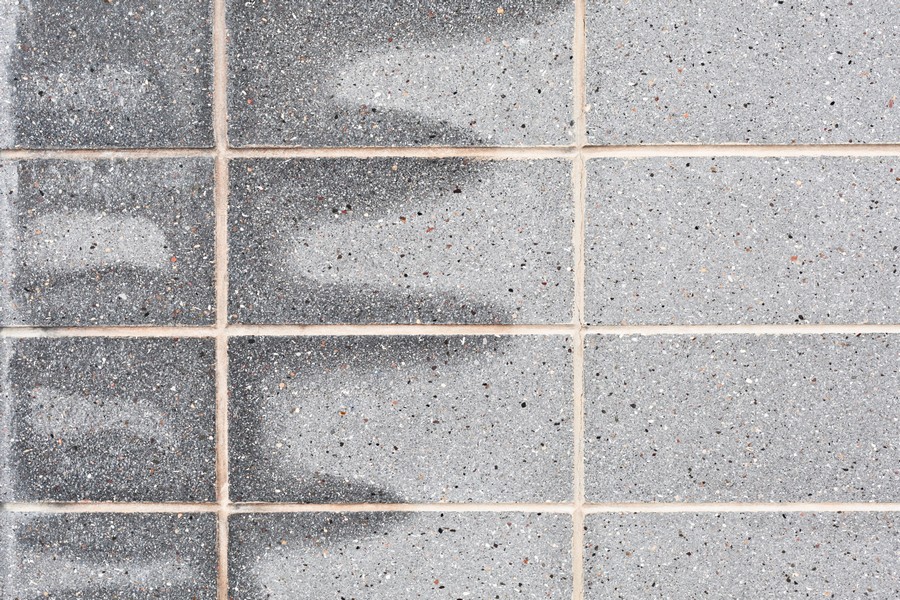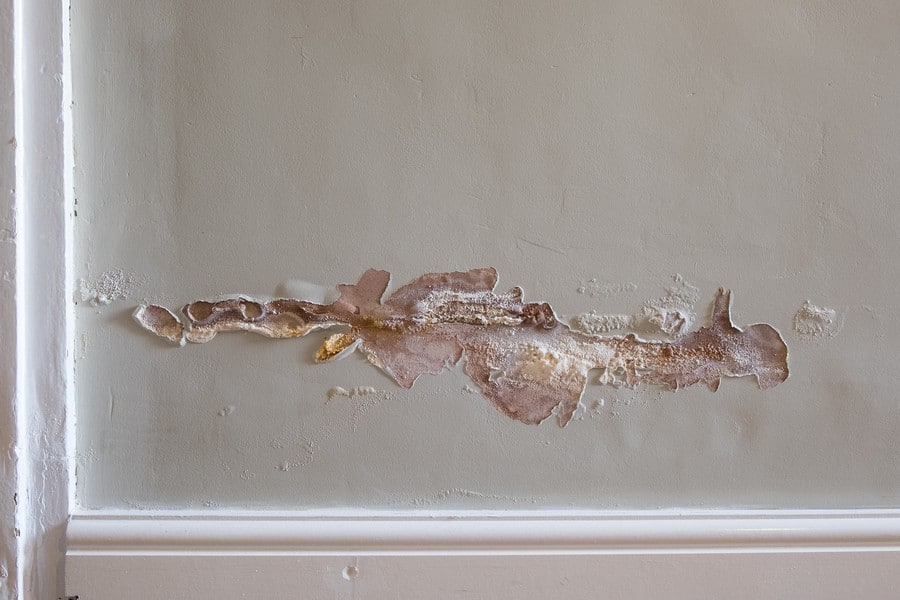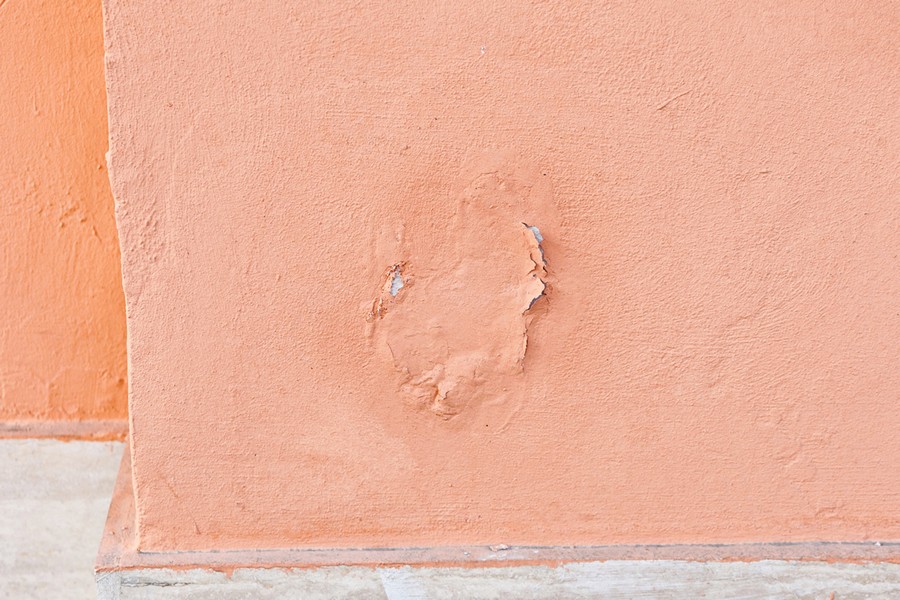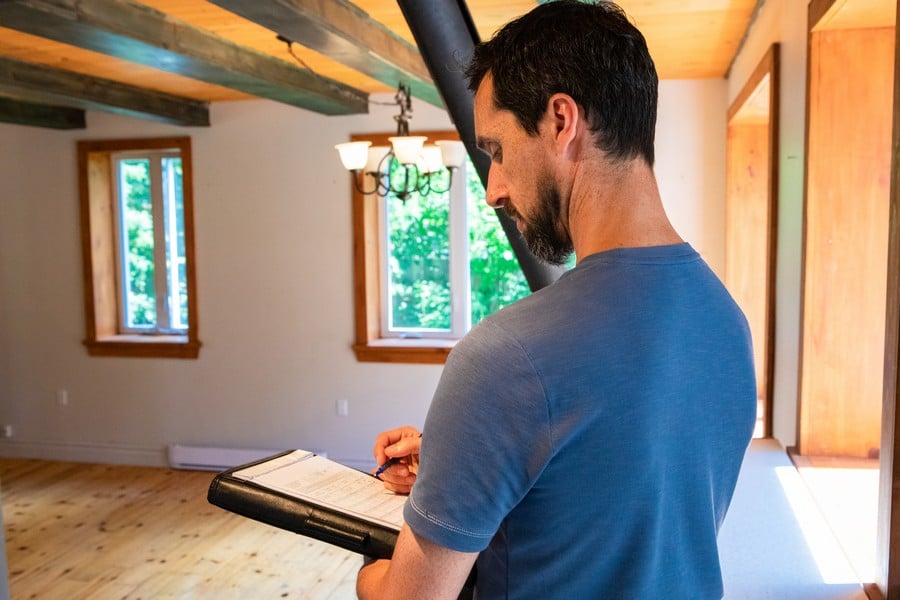Contact Sussex Damp Experts Now to Speak With an Expert.

Rising damp is the movement of water upwards through porous building materials in contact with the ground. This is caused by air drying on the upper surfaces, causing the wall to serve as a wick, pulling water upwards from the ground by capillary action, which subsequently evaporates from the surface into the atmosphere. The moisture will continue to rise until it reaches a point where gravity will draw it back down unless evaporation is feasible.
Water coming from the earth will transport various dissolved nitrates, chlorides, and other salts (hygroscopic ground salts) upwards into the brickwork and plaster. More and more of these salts collect in the wall as the water evaporates. Ground salts accumulate moisture from the surrounding environment fast because they dissolve quickly. Rising moisture in a wall is frequently the cause of wood rot in surrounding timbers. As a result, the plaster will always remain wet or polluted even when the rising damp is healed. As a result, while addressing increasing moisture, the plaster is usually removed.
This type of damp is caused by water infiltration on the ground or underneath it, as opposed to penetrating damp, which occurs on the top of walls or ceilings due to rain penetration. Installing a damp proof course (DPC) that keeps moisture from rising through floors and walls is the most effective remedy for a rising damp problem.

The height at which rising and penetrative damp occur is the most prevalent distinction. Rising damp occurs only up to a metre above ground level, whereas penetrating damp can occur anywhere.
Rising damp from the earth, rainwater leaks, inadequate drainage, or faulty plumbing are examples of external sources of rising damp. The humidity in your home from cooking, bathing, and breathing causes condensation damp.
Contact Sussex Damp Experts Now to Speak With an Expert.
Tide marks are left on the wall, one of the most common signs of rising damp. The salt in the earth and its evaporation generate tidal marks. They can be seen up to 1m above the skirting board if you look above it.
If you don’t see any tide markings, you might notice damp patches or staining on the walls. Typically, you’ll notice a moist patch that’s brown or yellow in colour and resembles tide markings. Above the skirting board, you’ll be able to see these as well.
Look carefully to see if your wallpaper starts to come away from the skirting board and curls up in the corner.
Keep an eye out near the skirting board if you spot fungus forming or creeping out on the side. Rising damp can destroy timbers and come into contact with various objects, as can other types of dampness. Also, look for loose paint or sections of paint that have been damaged.
Salt in the form of white flaky deposits is another sign. When the salts are washed out of your brick and into the plaster, they appear as blistering patches on your walls.
If you notice black mould growing over your skirting board, it’s a sign that there’s a source of humidity in the area. It could be a warning sign of rising dampness if there is no other evidence of black mould in the home or elsewhere, and the black mould is localised from the skirting board up to 1m above.
If none of the initial indications applies to your damp problem, take a look at the following if you still suspect rising damp:
Examine the area where you feel there is rising damp and rub your fingertips around it. If you have wallpaper, you may hear the salts that have been drawn above ground crushing.
Look at the stones or brickwork if there is an exposed surface. Check if the brick is damp or if salts are forming in addition to the paint or wallpaper.
It’s also worth noting that rising damp will only occur on the ground floor levels since moisture from the earth is pulled up the wall, causing the problem.

The most common mistake that allows damp to spread is confusing it with condensation effects, where water vapour becomes liquid by contact with cold surfaces. Surface condensation can have a similar appearance, but a few tell-tale signs indicate the problem is present.
Investigating the conditions from beneath the depths of the wall can indicate whether or not your home is damp. According to specialists, taking masonry samples, particularly mortar, is an excellent way to define rising damp. You have rising damp if the samples reveal evidence of water penetration. If you have a condensation problem, this will not be the case.
A Damp Proof Course (DPC) is a treatment option for rising dampness rather than condensation. In any instance, if you misapply it, you will not be able to address the problem. Any misdiagnosis will result in the use of the incorrect solution.
The best course of action is to contact Sussex Damp Experts, who have well-qualified professionals and a good reputation in the industry.
The first step in resolving any moisture issues in your property is to conduct an inspection. Our Sussex Damp Experts will not search for problems that don’t exist to make money. Instead, they will only report on actual damp issues and offer valuable and cost-effective solutions.
Our damp proofing specialists can evaluate your property, elaborate a damp survey, and suggest the best course of action for repairs.
Sussex Damp Experts offers a wide range of damp proofing treatments and is confident in our ability to provide cost-effective repairs backed by our 30 years guarantees.
Whether it requires rising damp treatment, basement waterproofing, dry rot control, timber treatments or other damp proofing expertise, you can rely on our damp proofing experts to assess the problems in our detailed surveys and provide you with the most professional services to give you peace of mind for the future.
Even when rising damp is minimised, there will frequently be a tiny amount of moisture trapped in the substrate owing to salt contamination. PTL will install a chemical DPC system to control the problem if necessary. At regular intervals, the chemical DPC is injected into the walls. The salt-contaminated plaster will be replaced, and the decorative surface will be protected from any remaining moisture in the wall.
Water-attractive hygroscopic salts, which are transferred from the earth to the brickwork by increased wetness, will continue to draw moisture, especially during periods of high humidity. The damp-proof course will keep the dampness from rising any further. Re-plastering to the PTL specification is necessary if this occurs to an unsatisfactory degree. PTL has expert plasterers on staff and would be happy to give quotes for this job.
Damp proofing is a method of preventing moisture from entering a structure, especially from rising damp. A ‘tide line’ of yellowish or brownish stains or blown plaster in the bottom section of your wall above your skirting board are typical symptoms of rising dampness. You can also have decaying or moist skirting boards or floors.
Performing a minor repair for rising damp (e.g. repointing or painting over the damp) will increase the cost of the job in the long run and require you to redo the job later.
A damp proof course is a water-resistant barrier that runs the length and width of your wall. It prevents groundwater from creeping up through the wall due to capillary action.
We can offer you a variety of damp proofing choices at Sussex Damp Experts, each with its own set of advantages. A damp proof course (DPC) is a method that aids in the control of rising dampness by regulating the moisture caused by capillary action.
A damp proof membrane (DPM) is a unique membrane added to a DPC to combat dampness. A DPM can use a silicone material to help manage moisture. Buildings are protected from water and moisture, including rain, using this coating process. It also contains cement, such as shotcrete, which provides moisture, water, and pressure resistance. The construction of cavity walls creates a space between the inner and outside walls to keep water out, whereas pressure grouting is used to plug any gaps in masonry walls.


If you discover rising dampness in your property, act soon! Otherwise, your property may face serious issues.
Beyond the visual soreness caused by damp problems, dampness can cause severe damage to a property’s structure and compromise structural integrity if not addressed on time. There is also evidence that it can induce respiratory difficulties, albeit this mainly affects people who already have a respiratory problem. Whether you have damp developing due to condensation, leaking guttering, or leaking pipes, call our damp removal and proofing experts immediately to get it fixed as soon as possible. Our commitment to providing excellent customer service, as well as our depth and breadth of knowledge, are the foundations of our continued success.

Our team has over 20 years of combined expertise offering damp proofing in Brighton. If you are experiencing damp issues in Brighton and the surrounding areas, please call our damp specialist team on 01273 257 765 to schedule a survey or treatment.
Following our instructions, one of our CSRT and CSSW trained surveyors will thoroughly examine and provide a report, price quote and treatment suggestions.
Suppose you decide to go ahead with our damp proofing services. In that case, we have a complete team of damp proofing specialists who have a comprehensive portfolio dealing with damp problems, such as dry rot and woodworm, wet rot, wood rot, basement waterproofing, internal dampness, rain penetration, condensation control both in commercial properties and private homes.
Book a damp survey appointment or give us a call, and we can arrange for a local team to contact you. We have many rising damp investigators that can efficiently and promptly schedule a visit to your house when most convenient for you.
The costs associated with addressing a damp problem depend on many different factors such as the property’s dimension and architecture, the type of damp causes, the materials involved, among others.
Because there’s a comprehensive range of details to consider, don’t hesitate to contact our fully trained team to book a survey and have one of our friendly team members inspect the property and fully understand the situation, thus providing you with the most cost-effective quote for treatments and repairs.

We follow excellent standards in damp proofing treatments, professional re-plastering, wood preservation and are experts in performing damp surveys.
We provide highly customised, competent, and dependable damp proofing treatment and repair services to homes, local authorities, small businesses, and large commercial properties.
Call us today on 01273 257 765 to speak with a member of our helpful team about your needs.
For your safety and security, all of our work is covered by our company’s guarantee. We are also members of the Guarantee Protection Scheme, an independent insurance policy that covers the duration of your guarantee if you want to take it out.


Max and his team have been at our property all week and I really can’t thank them enough for the fantastic job they’ve done on plastering both our walls and ceilings. They have literally transformed the appearance of our house! Not only has Ma…

From start to finish Max has been incredable. His knowledge lin damp proofing is second to none and his team where very clean and polite. The plastered finish was like glass so happy we choose Max Plastering for job.

Lovely bunch of lads left a very neat and clean job. Problem was solved.

Perfect Finnish and all left clean and tidy and no mess. Used Max previously and would not hesitate to ask him carry out more work.

Max, Harvey and Stuart arrived promptly as arranged. Done a great job on our outside rear wall. Work completed to a high standard, removal of all old material and cleaned up after themselves. I am so pleased with the standard of their work they ar…

They turned up on time and carried out the works in a very professional manor leaving the front of the house clean and tidy. Very impressed would definitely recommend.

I have to say that on every level Max (with Stuart and Harvey) did an extremely professional job! They explained what they were going to do, they were polite and courteous and respected that they were coming into our home. The plastering is of the…

I called max and he managed to come around the same day to do a survey. The next day I received an extremely detailed survey compared to any other damp proofer which made me feel very at ease that he was going to do the right job. Max and team tur…

Contact Sussex Damp Experts Now to Speak With an Expert.